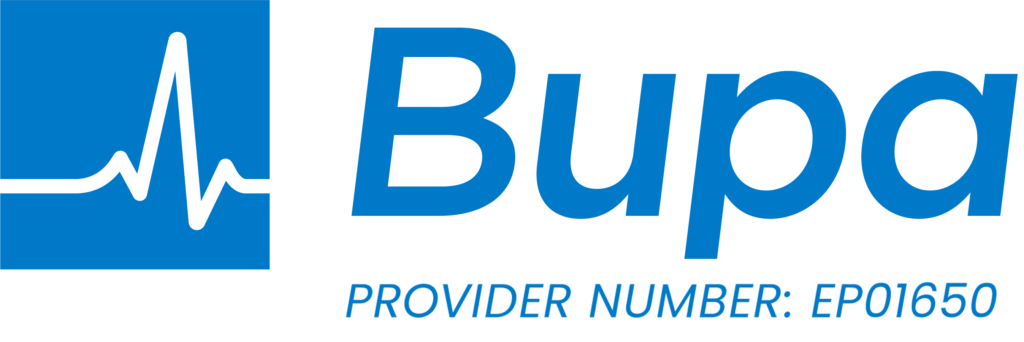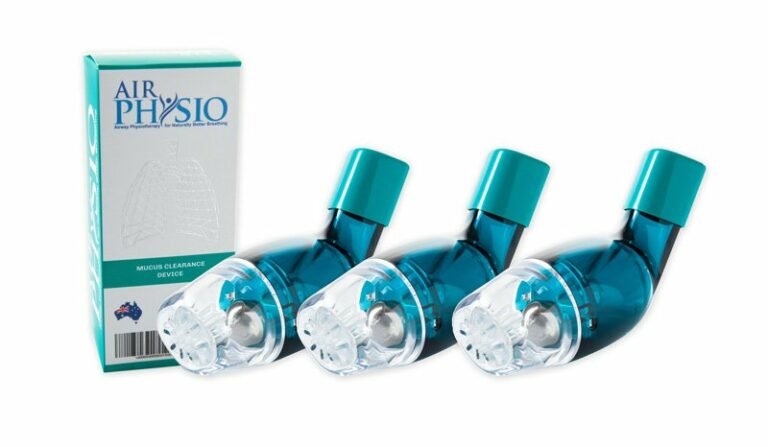The Art of Chest Percussion for Respiratory Wellness
In the pursuit of optimal respiratory health, understanding and implementing techniques like Chest Percussion can be a game-changer. This method, designed to enhance lung function
The conducting airways (Figure 1) of the respiratory system are lined with hairs, called cilia (Figure 2). Mucus generating goblet cells (Figure 2) produce a mucus film that sits on top of the cilia. The mucus is cleared by the cilia moving back and forth along the conducting airway [called the mucociliary escalator], this action moves the mucus from the smaller peripheral airways to the larger central airways. From these larger airways, mucus and any trapped inhaled particles (i.e. smoke, pollen, pollution, etc…) or bacteria can be cleared, typically using a forced expiratory technique such as a cough or huff.
Typically, with many lungs diseases, the body creates an excess of mucus secretions.
Asthma – with Asthma (especially Bronchial Asthma, Figure 3), when the airways become hypersensitive from triggers in the air, they can become inflamed and narrow, which also leads to an excess of mucus secretion, which makes it harder for the body to clear naturally.A basic understand of some lung conditions are as follows:
Cystic Fibrosis – The body creates an over-supply of ‘sticky’ mucus secretions which are difficult for the body to remove from the airways naturally.
Chronic Obstructive Pulmonary Disease (COPD)
Chronic Bronchitis – The airways are continually inflamed and produce mucus, which may lead to the cilia (hairs) becoming damaged from smoke, pollution and irritants, degrading the mucociliary escalator and making it harder to remove mucus secretions.
Emphysema – The smoke and pollution cause the alveoli air sac membranes to break down and be coated with carbon deposits. This causes inflammation and mucus secretions in the air sacs, reducing gas transfer. This makes it harder for the lungs to expel due to the absence of the mucociliary escalator in this section of the lungs.
Figure 5 – COPD (Chronic Bronchitis and Emphysema)
Bronchiectasis –The airway walls are damaged, creating pockets for the mucus to be trapped in and thus also degrading the mucociliary escalator and making it harder to remove secretions. (Figure 6)
Figure 6 – Bronchiectasis
How does Airway Clearance Help Lung Disease?
For lung diseases that result in excess secretions, airway clearance techniques and devices are considered to be essential for optimising respiratory status and reducing disease progression [1].
There are a number of airway clearance techniques and devices including postural drainage, percussion, breathing exercises and positive expiratory pressure (PEP).
Airway clearance techniques and devices apply external forces to the lungs and airways that manipulate lung volumes, pulmonary pressures and gas flow [2, 3], pushing excess mucus up and out of the smaller airways and into the larger airways, then into the throat to be cleared out of the body [2].
Positive expiratory pressure (PEP) devices can assist airway clearance in several ways.
Figure 7 – Collateral Ventilation
Oscillating high frequency PEP (OPEP) devices combines both PEP and airway oscillation techniques.
The AirPhysio device is a handheld pipe-like OPEP device which includes several original design features in the device including 3 different versions to allow for differing lung capacities and function.
Figure 8 – Oscillating air of AirPhysio
As the subject breathes out through the device, the ball moves up and down creating an opening and closing cycle as the stainless-steel ball is lifted off and then reseated on the cone throughout expiration [8]. These opening and closing cycles result in oscillations of endobronchial pressure (pressure in the airways to assist in expanding and opening up the airways) and expiratory airflow (air flowing out of the airways, reducing pressure in the lungs) which coincide with the opening and closing cycle of the ball being seated and lifted from the cone [8]. (Figure 8) It is hypothesised that these additional oscillations may enhance sputum clearance by decreasing the viscoelastic properties of sputum and improve clearance through the airways.
Recent Cochrane reviews in individuals with cystic fibrosis, bronchiectasis and following an acute exacerbation of chronic obstructive pulmonary disease (AECOPD) suggest that airway clearance techniques are safe and may confer some benefit on clinical outcomes [1, 2, 9]. In AECOPD, there was a greater magnitude of the effect for PEP over non- PEP airway clearance techniques on the need for ventilatory assistance and hospital length of stay [2]. In a large randomised controlled trial comparing PEP with no airway clearance during a hospital stay for AECOPD, resting breathlessness improved more rapidly in the group allocated to PEP when compared control in the first 8 weeks following intervention.
The recently published Cochrane review by McIlwaine et al [1] examined the use of PEP devices in individuals with cystic fibrosis. Using outcomes such as changes in lung function, mucus cleared from the airways and quality of life, the authors reported that efficacy of PEP was similar to other forms of chest physiotherapy. Of note these authors compared the efficacy of PEP and OPEP and found similar results for both techniques.
An early study by Konstan and colleagues [8] described the efficacy of OPEP devices for airway clearance in 18 cystic fibrosis patients. The authors reported there were no adverse events with the device and that patients expelled significantly greater amounts of sputum (mucus) when compared to the airway clearance techniques of postural drainage and voluntary cough.
References
Mcllwaine, M., B. Button, and K. Dwan, Positive expiratory pressure physiotherapy for airway clearance in people with cystic fibrosis. Cochrane Database Syst Rev, 2015(6): p. CD003147.
Osadnik, C.R., C.F. McDonald, A.P. Jones, and A.E. Holland, Airway clearance techniques for chronic obstructive pulmonary disease. Cochrane Database Syst Rev, 2012(3): p. CD008328.
Pryor, J.A., Physiotherapy for airway clearance in adults. Eur Respir J, 1999. 14(6): p. 141824.
Falk, M., M. Kelstrup, J.B. Andersen, T. Kinoshita, P. Falk, S. Stovring, and I. Gothgen, Improving the ketchup bottle method with positive expiratory pressure, PEP, in cystic fibrosis. Eur J Respir Dis, 1984. 65(6): p. 423-32.
Osadnik, C.R., C.F. McDonald, and A.E. Holland, Advances in airway clearance technologies for chronic obstructive pulmonary disease. Expert Rev Respir Med, 2013. 7(6): p. 673-85.
Oberwaldner, B., J.C. Evans, and M.S. Zach, Forced expirations against a variable resistance: a new chest physiotherapy method in cystic fibrosis. Pediatr Pulmonol, 1986. 2(6): p. 358-67.
Myers, T.R., Positive expiratory pressure and oscillatory positive expiratory pressure therapies. Respir Care, 2007. 52(10): p. 1308-26; discussion 1327.
Konstan, M.W., R.C. Stern, and C.F. Doershuk, Efficacy of the Flutter device for airway mucus clearance in patients with cystic fibrosis. J Pediatr, 1994. 124(5 Pt 1): p. 689-93.
Lee, A.L., A.T. Burge, and A.E. Holland, Airway clearance techniques for bronchiectasis. Cochrane Database Syst Rev, 2015(11): p. CD008351.
In the pursuit of optimal respiratory health, understanding and implementing techniques like Chest Percussion can be a game-changer. This method, designed to enhance lung function
Introduction: In the intricate symphony of health, our lungs conduct the rhythm of life through the simple act of inhaling and exhaling. Join me on

Thanksgiving and Christmas Gift Ideas The holiday season is just around the corner, and it’s time to start planning for the most wonderful time of
AirPhysio may be able to help by assisting with
✅Clearing the mucus clogging airways
✅Helps Promote Optimal Lung Capacity
✅Helps Promote Optimal Lung Hygiene
✅Helps treat Respiratory Conditions
✅May Reduce the chance of developing lung infections
✅Recommended by doctors, physical Therapists & Pulmonologists
✅Helps Make Breathing Easier
✅Sold in 106 countries globally


Do you suffer from Dry or Persistent Cough, Breathlessness, Respiratory or Severe Respiratory Conditions, or Shortness of Breath as you Get Older?

THIS PRODUCT MAY NOT BE RIGHT FOR YOU. READ THE WARNINGS BEFORE PURCHASE (Contraindications of Untreated pneumothorax; Tuberculosis; Oesophageal surgery; Right-sided heart failure; Middle ear pathology, such as ruptured tympanic membrane)
FOLLOW THE DIRECTIONS FOR USE
IF SYMPTOMS PERSIST, TALK TO YOUR HEALTH PROFESSIONAL

Gallery
AirPhysio is an Oscillating Positive Expiratory Pressure (OPEP) device that is used for mucus clearance and lung expansion to help in the treatment of respiratory conditions. The use of the AirPhysio device helps to facilitate secretion mobilization and maximize lung volume for cleaner healthier lungs.
© AirPhysio 2022 – All Rights Reserved
| Cookie | Duration | Description |
|---|---|---|
| cookielawinfo-checkbox-analytics | 11 months | This cookie is set by GDPR Cookie Consent plugin. The cookie is used to store the user consent for the cookies in the category "Analytics". |
| cookielawinfo-checkbox-functional | 11 months | The cookie is set by GDPR cookie consent to record the user consent for the cookies in the category "Functional". |
| cookielawinfo-checkbox-necessary | 11 months | This cookie is set by GDPR Cookie Consent plugin. The cookies is used to store the user consent for the cookies in the category "Necessary". |
| cookielawinfo-checkbox-others | 11 months | This cookie is set by GDPR Cookie Consent plugin. The cookie is used to store the user consent for the cookies in the category "Other. |
| cookielawinfo-checkbox-performance | 11 months | This cookie is set by GDPR Cookie Consent plugin. The cookie is used to store the user consent for the cookies in the category "Performance". |
| viewed_cookie_policy | 11 months | The cookie is set by the GDPR Cookie Consent plugin and is used to store whether or not user has consented to the use of cookies. It does not store any personal data. |